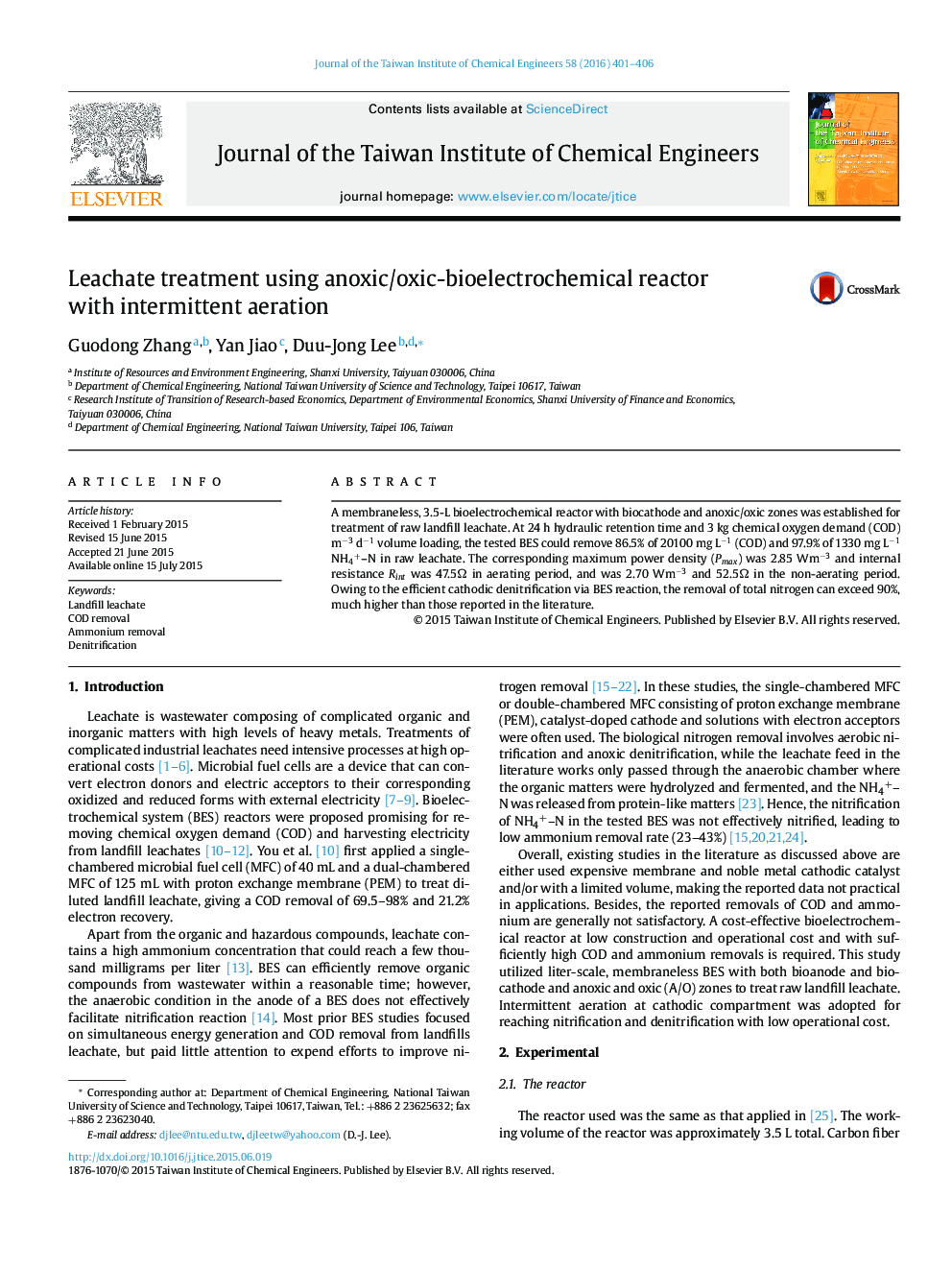| Article ID | Journal | Published Year | Pages | File Type |
|---|---|---|---|---|
| 690679 | Journal of the Taiwan Institute of Chemical Engineers | 2016 | 6 Pages |
Highlight•A membraneless, 3.5-L bioelectrochemical reactor was established.•Biocathode was adopted and intermittent aeration at cathode was applied.•The BES removed 86.5% of COD and 97.9% of NH4+–N in raw leachate.•Cathodic denitrification via BES reaction achieved removal of total nitrogen.
A membraneless, 3.5-L bioelectrochemical reactor with biocathode and anoxic/oxic zones was established for treatment of raw landfill leachate. At 24 h hydraulic retention time and 3 kg chemical oxygen demand (COD) m−3 d−1 volume loading, the tested BES could remove 86.5% of 20100 mg L−1 (COD) and 97.9% of 1330 mg L−1 NH4+–N in raw leachate. The corresponding maximum power density (Pmax) was 2.85 Wm−3 and internal resistance Rint was 47.5Ω in aerating period, and was 2.70 Wm−3 and 52.5Ω in the non-aerating period. Owing to the efficient cathodic denitrification via BES reaction, the removal of total nitrogen can exceed 90%, much higher than those reported in the literature.
Graphical abstract Evolutions of DO in catholyte and cell voltage (Rext = 100Ω, at loading of 3.0 kg COD·m−3 d−1) in a typical aeration cycle.Figure optionsDownload full-size imageDownload as PowerPoint slide
